Pattern Focus: Greek Key
http://decor-ideas.org 05/07/2015 06:16 Decor Ideas
The Greek key pattern was an important symbol in ancient Greece. It signified infinity, eternal flow, friendship, love, waves and the four seasons, to name a few of its associations. With its bold, twisting design, the Greek key pattern is the epitome of an enduring classic. Here’s how to use this timeless and surprisingly flexible pattern.
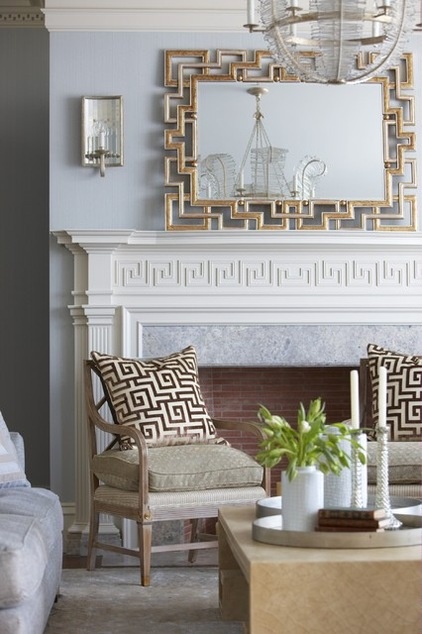
In the movie My Big Fat Greek Wedding, family patriarch Gus Portokalos dares anyone who will listen to “give me a word, any word, and I show you that the root of that word is Greek.” A lover of all things Hellenistic, Gus would surely have pointed out that while “Greek key” is the motif’s most common name, it also goes by “Greek fret” and the “meander,” or meandros, pattern.
Although it can have many variations, the Greek key is a continuous, twisting geometric design that is said to be named after the Meander River, located in modern-day Turkey. The ancient Greeks used the bold design to decorate their temples and pottery.
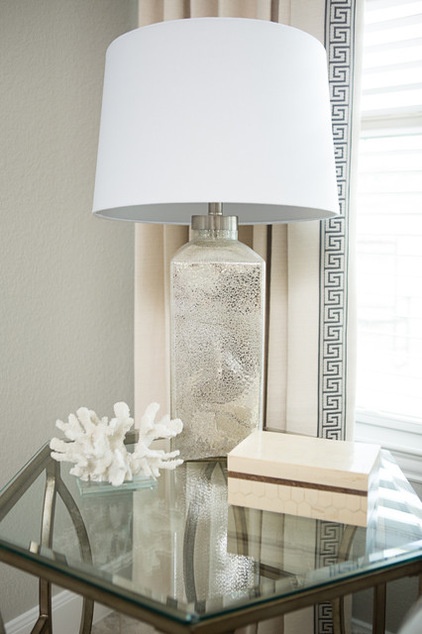
Borders
If any pattern was destined to be a border, it would be the Greek key. Its linearity lends itself to banding, bordering and edging — whether for a window treatment, a tile motif or architectural molding.
Drapery border. The vertical opening side of a drapery panel is called the leading edge, and it’s the most popular place for decorative borders on drapery panels. A Greek key decorative border emphasizes the fabric’s height and brings visual structure to the treatment. It also looks fabulous and doesn’t allow the drapery to visually fade into oblivion.
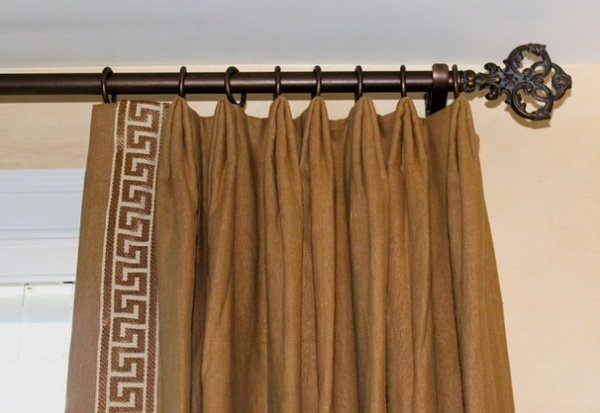
One thing to consider when using a drapery panel with a Greek key border is the dimensionality and stiffness of the border material. Because it ends at the top of the drapery panel and is sewn onto the base drapery fabric, it won’t have the same soft flow as the rest of the panel fabric. So, this portion won’t “pinch” for a pinch pleat, and grommeted and ring-top panels will tend to stand open a bit more compared with the base fabric at its side. While this configuration is necessary to accommodate the beautiful border, the pleat inconsistency might bother some.
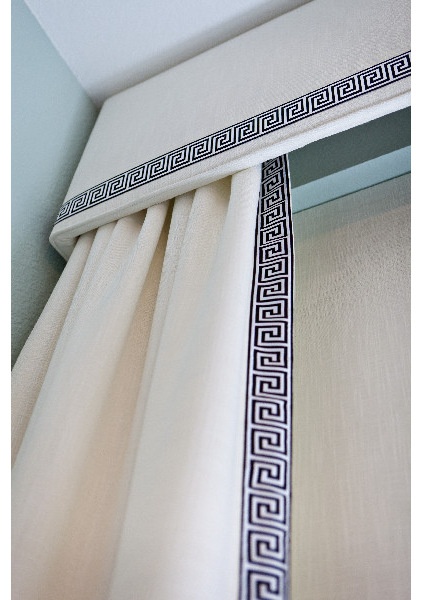
An alternative is to cover the top portion of the drapery panels with a valance, or cornice, as shown here. Like the drapery panel, the bottom edge of a cornice is an opportunity to show off a decorative Greek key border.
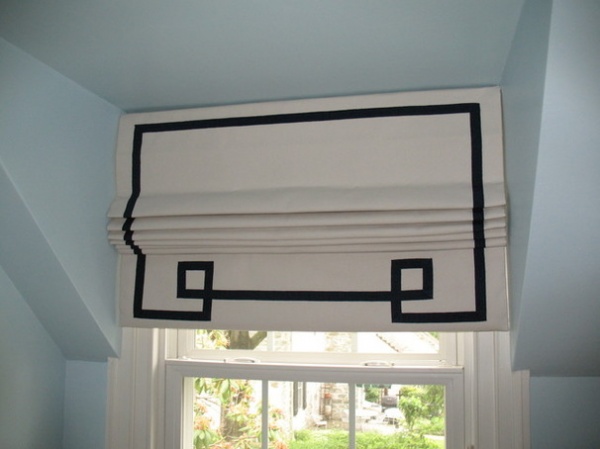
If you don’t have the space for drapery, consider applying decorative tape to a Roman shade in a Greek key pattern at the perimeter. Simple and clean looking, it yields a powerful punch.
Here Jocelyn Erway of Erway Drapery Design used a 1-inch-wide navy blue grosgrain ribbon and topstitched it to the base fabric before fabricating the shade.
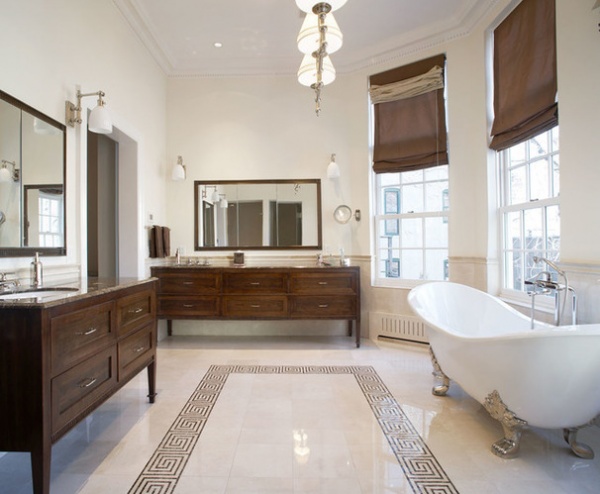
Tile border. Greek key motifs also make great tile borders that dress up a space. Popular floor installations include edge borders that go around the perimeter of a room, and inset borders, like the one shown here. These create an enclosed space similar to that of an area rug.
The size of the Greek key decorative tile will dictate the overall size of your border, because whole tiles need to be installed to maintain the continuity of the pattern. This installation has butt joints at the corners, meaning the vertical and horizontal ends abut each other versus being mitered, or cut on a 45-degree angle. Some tile manufacturers make corner pieces to continue the meandering motif around a 90-degree angle.
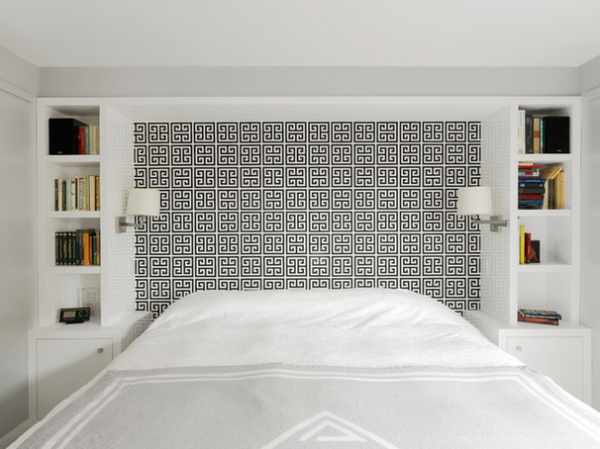
All-Over Pattern
If your love of Greek key can’t be contained in a mere border, consider going with an all-over pattern. This impressive wall is wallpapered in Jonathan Adler’s Greek Key pattern. Not only the focal point of the room, it also serves as a stunning mock headboard.
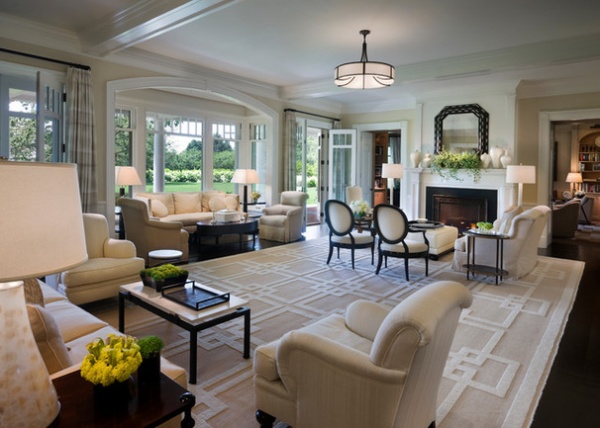
Scale
Greek key is one of the few patterns that translate well on vastly different scales, from gigantic to minuscule.
In this large living room, a singular oversize area rug grounds the space and bridges the two seating areas. The lines of the Greek key design on the rug are substantial but still proportional to the rug size.
The magic of this pattern is that additional “links” can be added to make the design larger or smaller. The linearity of the pattern also prevents it from becoming lost underneath furniture pieces.
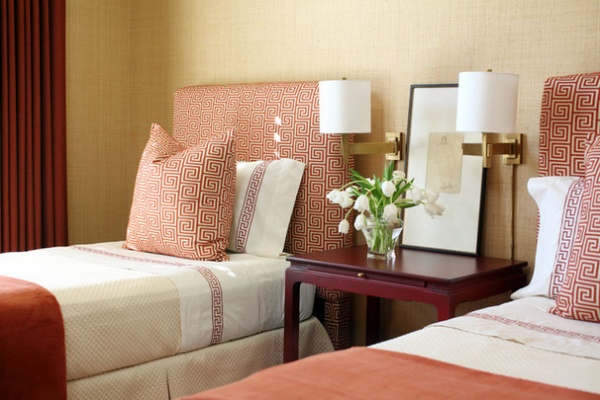
On the more diminutive side, the Greek key pattern on the upholstered headboards and pillow fabric shown here is legible but not overly graphic. Its lines are quite thin, giving it a more refined quality.
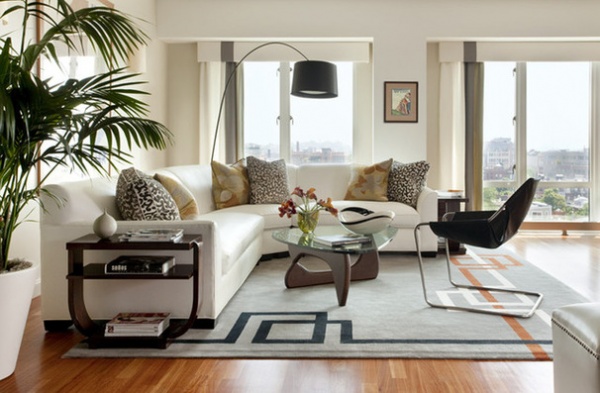
Playing With Balance and Symmetry
The repetitiveness of a traditional Greek key pattern makes it balanced by nature — square after square of wave-like designs are tightly strung along in a line. However, Greek key patterns can also be deconstructed to create unique asymmetrical designs. While nodding to the classic pattern, the custom-designed area rug shown here stands on its own to integrate with the midcentury vibe.
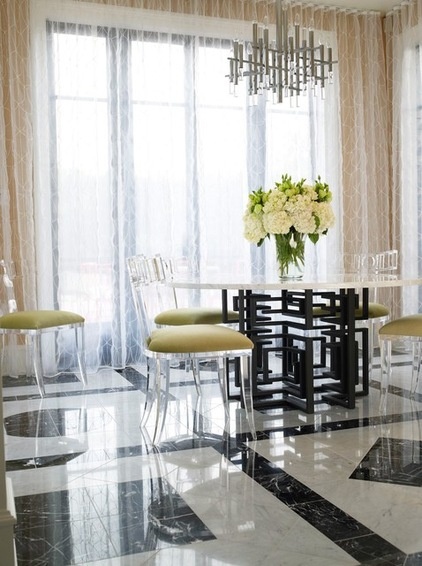
Sculptural
Greek key patterns don’t need to be two-dimensional. This custom hand-forged iron table base incorporates the Greek key pattern in its planar legs.
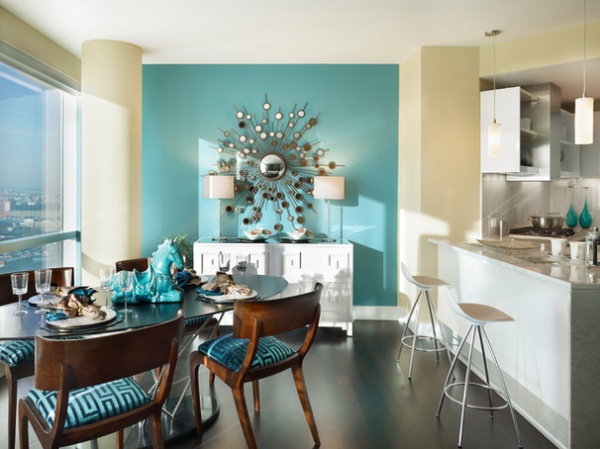
Upholstery
If you’re considering a Greek key upholstery fabric for your furniture, make sure the shape of your piece is appropriate. Simple, squarish shapes with simple lines, as with the klismos chairs seen here, are ideal for complementing the geometry of the Greek key design.
See more patterns: Buffalo check | Toile | Houndstooth | Paisley | Polka dots
Related Articles Recommended












